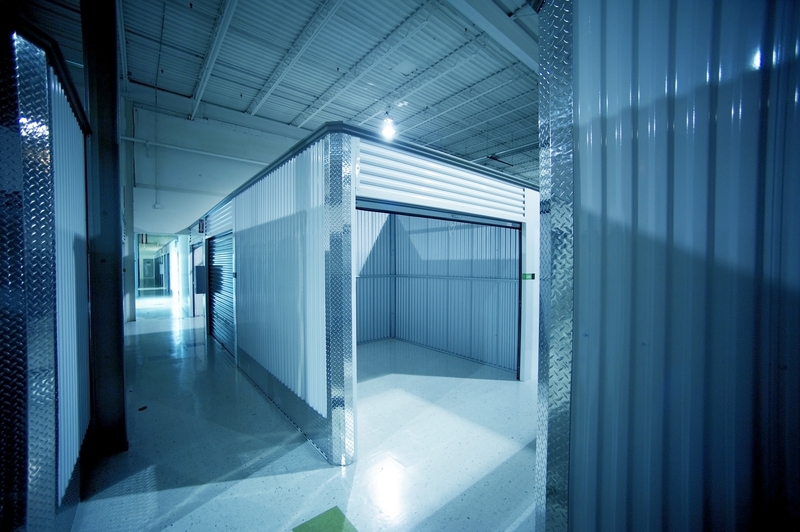Exploring the Role of Motion in Kinetic Lifting
Kinetic lifting is a process that involves the use of motion to move, lift, and transport loads efficiently and safely. The science behind kinetic lifting revolves significantly around the role of motion, which governs the technique, safety, and effectiveness of lifting operations--whether in manual handling or the use of advanced mechanical systems. In this comprehensive article, we delve deep into the importance of motion in kinetic lifting, exploring its implications for various industries, best practices, and the future of smart lifting solutions.

Understanding Kinetic Lifting: A Foundation
Kinetic lifting combines principles of kinetics (the study of forces and motion) with practical applications in lifting and moving objects. Unlike static lifting, where objects are hoisted and held without dynamic movement, kinetic lifting leverages controlled motion to improve efficiency, safety, and ergonomic performance.
The Science of Kinetics in Lifting
At its core, kinetic lifting uses physical laws of motion to minimize exertion and maximize output. Three primary principles come into play:
- Newton's Laws of Motion: These describe how forces create and change movement, crucial for predicting and controlling how loads behave during lifting.
- Energy Transfer: Efficient kinetic lifting techniques focus on reducing energy loss during load acceleration and deceleration.
- Biomechanics: Understanding human movement ensures that manual kinetic lifting doesn't place undue stress on the body, preventing injuries.
By mastering the role of motion in kinetic lifting, industries can enhance operational productivity and ensure workforce safety.
Key Elements of Motion in Kinetic Lifting
To fully grasp the influence of motion in kinetic lifting, it's essential to break down its core elements:
1. Direction of Motion
The direction in which force is applied determines how efficiently a load can be lifted or moved. In many settings, improper directionality increases the risk of accidents and energy wastage.
2. Speed and Acceleration
The speed at which a load is lifted and the rate of change of that speed (acceleration) dramatically influence both the safety and the effectiveness of the lift. Sudden movements often lead to drops, jerking motions, or operator strain.
3. Force Distribution
Properly distributing motion-related forces ensures that loads are evenly managed, reducing mechanical stress on lifting equipment or the human body.
4. Timing and Coordination
Kinetic lifting often requires perfect synchronization of motion, especially in team settings or when automated mechanisms are involved. Poor timing can result in dropped or imbalanced loads.
Practical Applications of Motion in Kinetic Lifting
The application of motion-based lifting extends across numerous sectors:
- Manufacturing and Warehousing: Automated conveyor belts and robotic arms utilize programmed kinetic motion to transport goods with speed and safety.
- Construction: Cranes and moving platforms depend on understanding motion to lift heavy loads securely and efficiently.
- Healthcare: Medical staff often use specialized kinetic lifting equipment to reposition patients, reducing musculoskeletal disorders.
- Logistics: Kinetic forklifts and hand-trucks utilize optimized motion paths for efficient package handling.
- Manual Lifting: Workers are taught kinetic lifting techniques to avoid injury, such as keeping loads close to the body and using legs to lift, instead of the back.
Optimized Kinetic Lifting Techniques
Mastering the role of motion in kinetic lifting isn't just about moving objects faster--it's about moving smarter. Here are foundational techniques:
Pre-Lift Assessment
Assess the weight, center of gravity, and required motion path before any lift. Knowing these factors helps determine the right technique and necessary safety measures.
Utilizing Centripetal and Centrifugal Forces
Certain kinetic lifts, like swinging or rotating loads, require a firm understanding of centripetal and centrifugal forces to maintain control and stability.
Smooth Transition of Motion
Transitioning from stationary to dynamic and vice versa should be fluid. Abrupt forces can destabilize loads and risk both equipment and operator safety.
Synchronization in Team Lifting
When multiple people are involved in a lift, perfect timing and coordination of motion are required to avoid uneven force distribution, which can result in dropped loads or injuries.
Safety Considerations: Preventing Injury with Better Motion
The role of motion in safe kinetic lifting can't be overstated. Safety protocols based on the science of motion include:
- Planning the Movement: Before any lift, map the route and anticipate changes in motion that may affect the load.
- Proper Body Mechanics: Use leg strength, maintain a straight back, and avoid twisting to channel motion through the strongest muscle groups.
- Load Securing: Ensure that the load can withstand dynamic movement without shifting, falling, or breaking apart.
- Using Assistive Devices: Where possible, use equipment designed to utilize kinetic principles--lift trucks, powered hoists, and exoskeletons.
Common Motion-Related Lifting Injuries
Improper use of motion in kinetic lifting can lead to:
- Muscle tears and strains
- Back injuries from twisting or jerking motions
- Crushed hands or feet from uncontrollable loads
- Fatigue from repetitive, inefficient motion
Implementing correct kinetic lifting motion techniques significantly reduces these risks.
Technological Advancements: Automating Kinetic Lifting Motion
The latest technology is revolutionizing how motion is applied in kinetic lifting:
Robotics and AI
Robotic arms, automated guided vehicles (AGVs), and drones are programmed to analyze loads and calculate precise movement paths, reducing the risk of human error.
Smart Sensors
Embedded with gyroscopes and accelerometers, modern lifting machinery can monitor motion in real-time, warning operators of unsafe speeds, angles, or load shifts.
Wearable Exoskeletons
These devices leverage kinetic motion, augmenting human strength and endurance while guiding proper techniques, making manual lifting safer and more efficient.
The Ergonomics of Motion in Kinetic Lifting
Workplace ergonomics emphasizes proper kinetic motion during lifting to protect workers and improve productivity. Key ergonomic considerations include:
- Posture Alignment: Study spine and limb alignment to prevent injury while maximizing efficient force transfer.
- Task Variation: Rotate tasks to avoid repetitive strain from motion in a single plane or direction.
- Rest and Recovery: Allow time between lifts to let muscles recover from dynamic exertion.
Kinetic Lifting in Specialized Environments
Some industries face unique challenges that emphasize the critical role of motion in kinetic lifting:
Confined Spaces
Here, the path of motion is often restricted, requiring creative solutions for lifting and transferring loads safely.
High-Risk Materials
Hazardous loads demand that motion during kinetic lifting is smooth and controlled to prevent spillage or impact.
Remote and Disaster-Relief Situations
Portability and adaptability of kinetic lifting systems are crucial, ensuring that motion-based techniques can be applied in unpredictable settings for quick, safe results.
Training for Optimal Motion in Kinetic Lifting
Training programs focus on understanding, applying, and mastering motion in kinetic lifting. Key components include:
- Educational Workshops: Theoretical sessions on kinetics and the physics of lifting.
- Practical Simulations: Hands-on experiences to build muscle memory and proper technique.
- Assessment and Feedback: Continuous evaluation ensures that operators apply motion safety principles consistently.

The Future of Kinetic Lifting: Embracing New Motion Paradigms
As technology evolves, the integration of motion science into kinetic lifting will become even more advanced. Anticipated trends include:
- Remote-Controlled Lifting Systems: Allowing operators to safely manage kinetic lifting from a distance.
- Data-Driven Analytics: Using motion data to optimize every lift for efficiency and safety.
- Collaborative Robots (Cobots): Sharing and synchronizing motion with humans for complex tasks.
- Adaptive Smart Grips: Technology that senses load shifts and automatically adjusts motion for stability.
Conclusion: Maximizing the Power of Motion in Kinetic Lifting
In summary, the role of motion in kinetic lifting is foundational to safe, efficient, and modern material handling--across industries and applications. By understanding the science of motion and applying it with technology, training, and ergonomics, organizations can minimize risks, boost productivity, and stay ahead in today's competitive landscape.
Exploring the role of motion in kinetic lifting is not just an academic pursuit; it's a practical necessity for anyone involved in moving loads, be it with muscle, machine, or a blend of both. As industries continue to evolve, those that prioritize mastering kinetic lifting motion will enjoy safer environments, healthier workers, and more successful operations.
- Efficient kinetic lifting increases productivity
- Proper motion in lifting reduces workplace injury rates
- Advancements in kinetic lifting motion enable smarter automation
Stay tuned for future developments in this exciting field as the intersection of motion and kinetic lifting continues to transform the possibilities for manufacturing, logistics, healthcare, and beyond.



